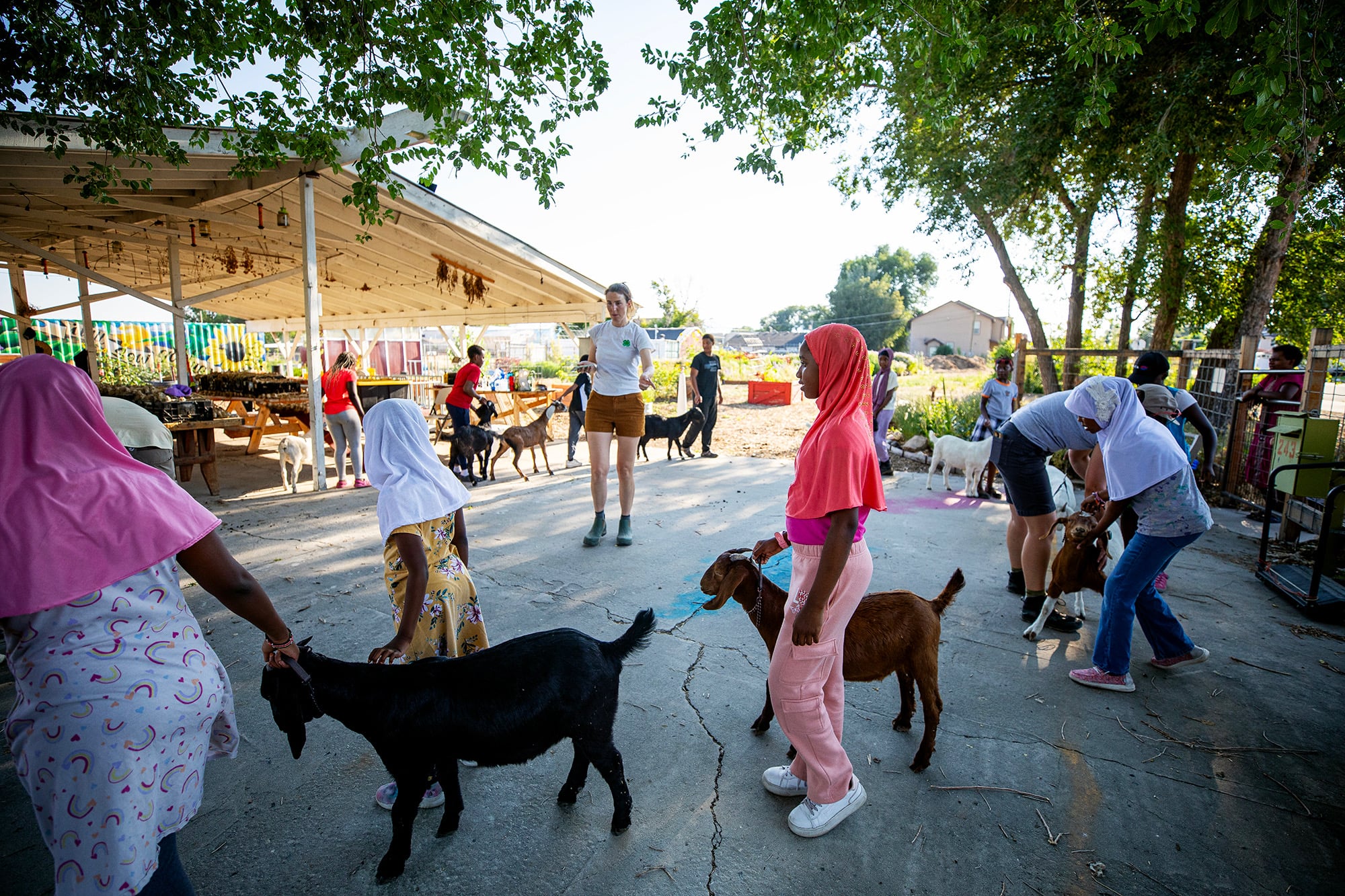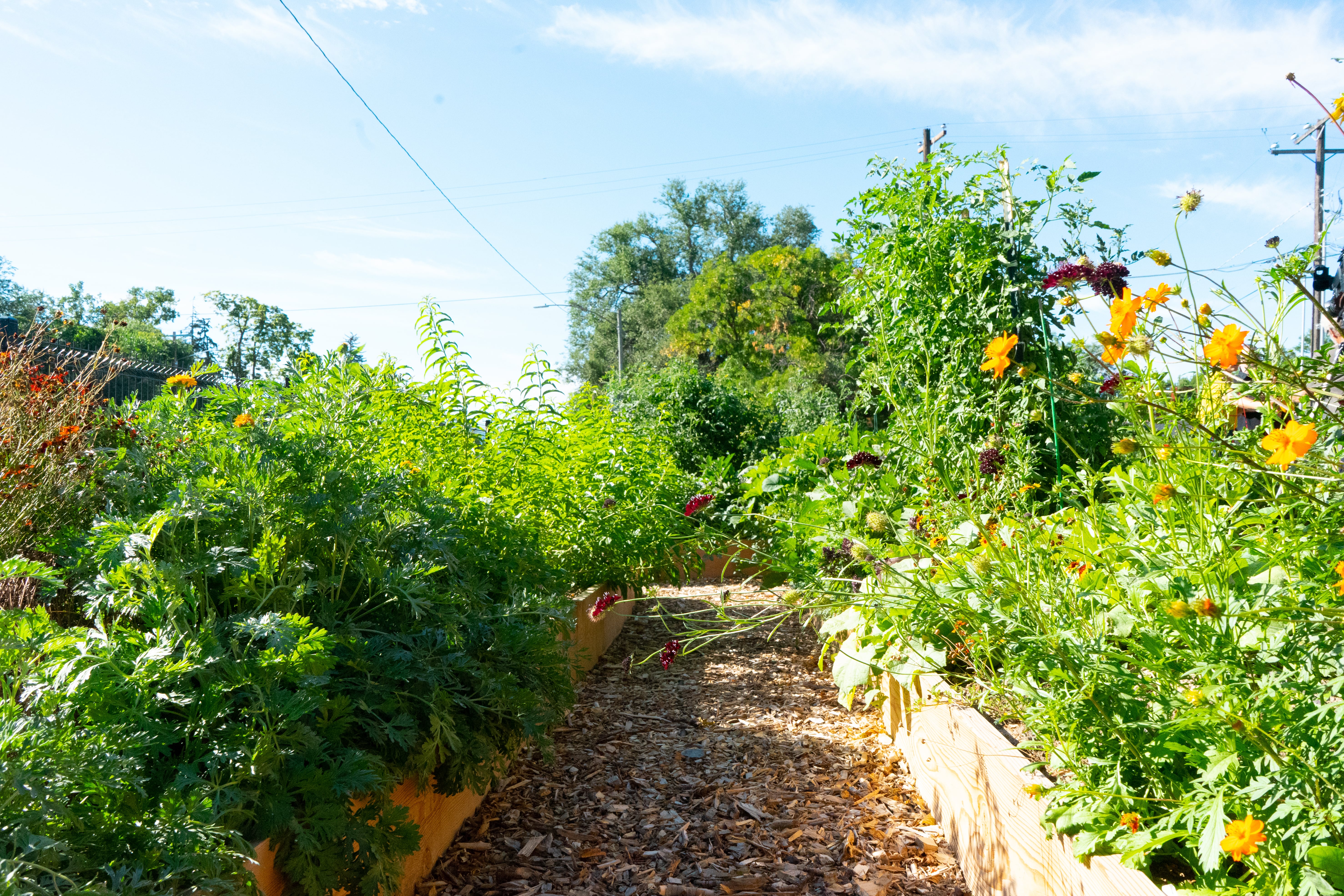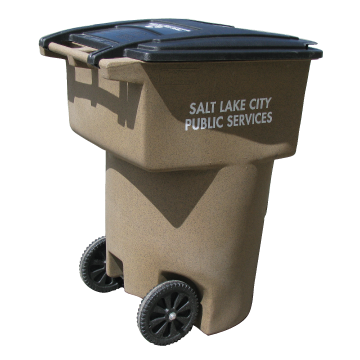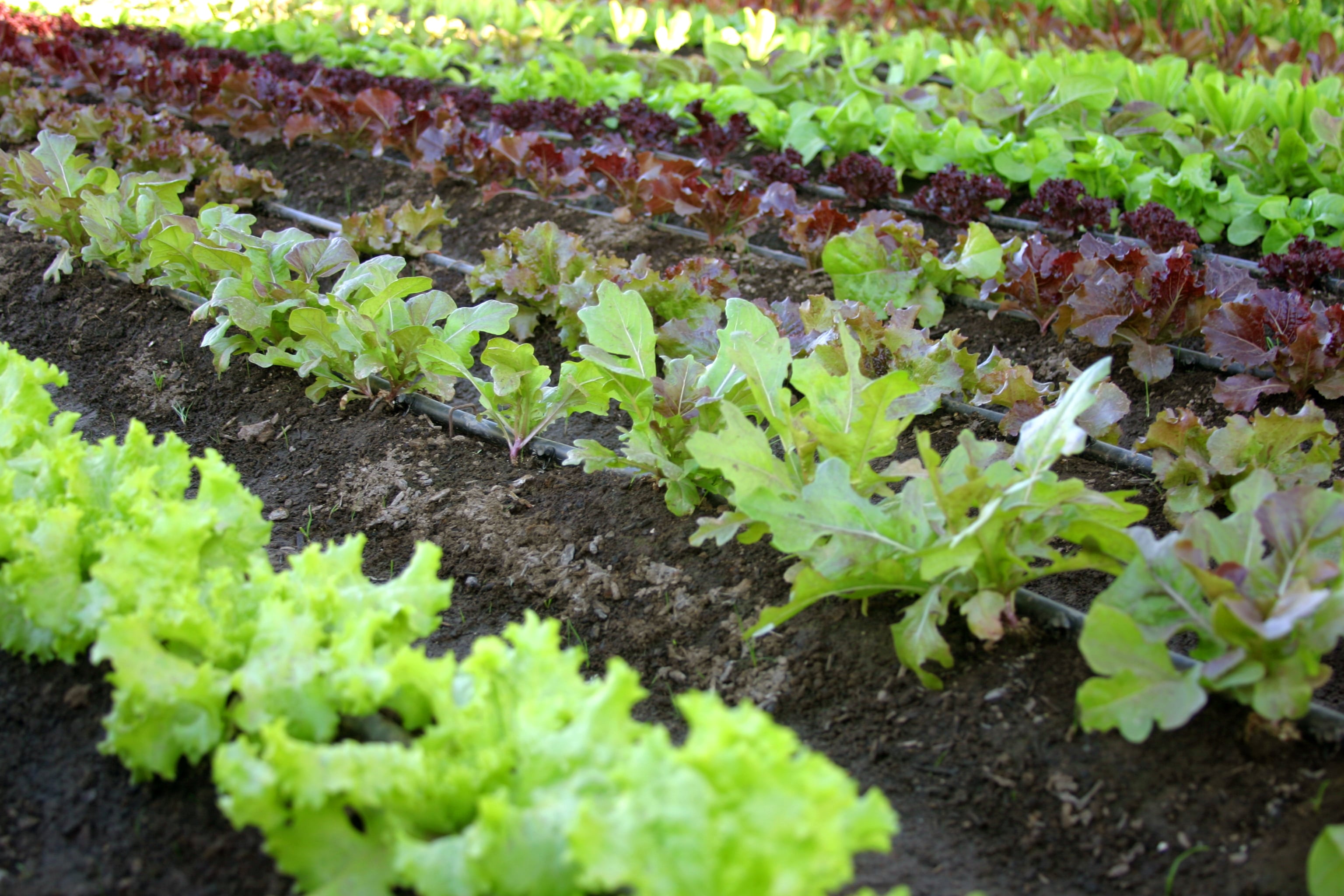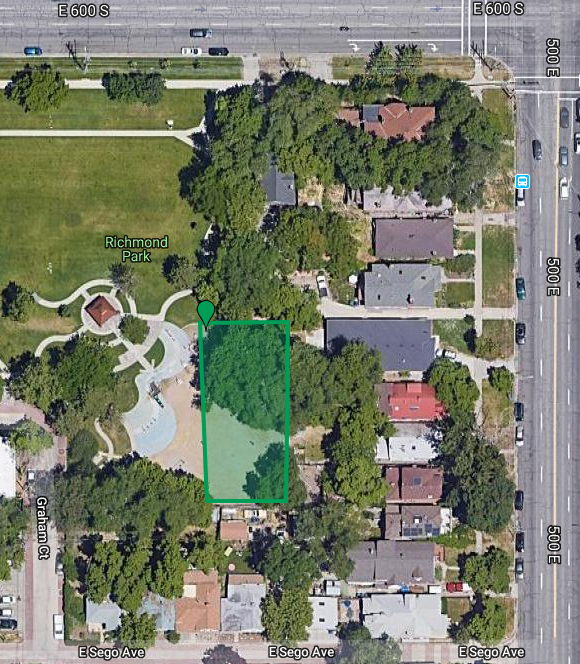
Composting is nature’s way of recycling. Just think about it — you can turn fruit, vegetables and yard waste into dark, crumbly, sweet-smelling soil amendment. Compost helps your garden and plants, saves water and saves landfill space. That’s what we call a win-win-win. Read on to learn about the benefits and basics of home composting.
The Benefits
Here they are:
- Saves you money by lowering garbage bills and replacing your need for commercial fertilizers and compost.
- Helps your garden and your plants thrive. Compost has also been shown to decrease pest infestations.
- Saves water by helping the soil hold moisture and reducing water runoff.
- Benefits the environment by recycling valuable organic material and extending the life of our landfill.
There are many methods of composting, just as there are many ways to cook. Your compost bins will be filled with the leftovers from what you eat and what you grow in your yard.
The Basics
SLCgreen tip: A balance of brown and green material, air and water is needed to make compost.
 Brown Material — Brown, dry yard and garden materials provide the carbon needed for your pile. Chop or shred large pieces. The smaller the pieces, the faster the compost. Examples include dried grass clippings, leaves, flowers and/or shrub prunings, twigs, hay, sawdust, shredded paper, pine needles* and weeds that have not gone to seed**. Woody branches should be chipped.
Brown Material — Brown, dry yard and garden materials provide the carbon needed for your pile. Chop or shred large pieces. The smaller the pieces, the faster the compost. Examples include dried grass clippings, leaves, flowers and/or shrub prunings, twigs, hay, sawdust, shredded paper, pine needles* and weeds that have not gone to seed**. Woody branches should be chipped.

Green Material — Green materials provide the nitrogen for your pile. When adding food scraps, cover with brown material to avoid potential odors or pest problems. Examples include peels, rinds, vegetable and fruit waste, coffee grounds w/filter, tea bags, egg shells, hair, fresh grass clippings, chicken/horse/rabbit/cow manures.
* 10% Rule. If you are unsure about a material such as pine needles or eucalyptus, only add 10% to your mix.
** SLCgreen tip: If there is a weed that you do not want in your yard, DO NOT add it to your compost pile.
Do Not Compost — Meat, bones, dairy products, greasy foods, diseased plants, treated lumber, pesticide treated leaves and grass, weeds spread by runners (i.e. morning glory), weeds gone to seed and NEVER add cat or dog waste. Trust us on that one.
Air — Your compost pile needs air for materials to break down. Aerating can by done using a garden fork or broomstick to turn or poke holes in the pile.
SLCgreen tip: Bacteria, fungus and insects that live in your compost need oxygen to work. Sufficient oxygen keeps your pile sweet smelling.
Water — Use liquids to dampen layers when building your pile. Keep your pile as damp as a wrung out sponge. Remember, in addition to water, you can add moisture by tossing in old juice, tea, coffee (w/o dairy), flat soda and other beverages.
How Does it Work? Believe it or not, bugs, worms and microorganism play a crucial role in helping your compost pile break down quickly. They create tunnels that aerate your pile and digest organic materials, adding nutrients to your compost. A compost pile may not appear to be active, but most of this is happening inside the center while the outer layers are acting as insulation.
 Is it Done Yet? Compost may be finished if it looks dark and crumbly and smells earthy instead of moldy or rotten. Depending on the method you use and how much maintenance you put into it, you could have compost in as little as 3 months or as long as a year.
Is it Done Yet? Compost may be finished if it looks dark and crumbly and smells earthy instead of moldy or rotten. Depending on the method you use and how much maintenance you put into it, you could have compost in as little as 3 months or as long as a year.
SLCgreen tip: The more you fuss with and turn the pile, the faster your compost will happen!
The Bins
Wire hoop bins are easy and fairly inexpensive to build and keep your yard waste compost pile tidy. Here is a simple how-to.
Wood frame bins are low-cost containers for yard waste and easy to build. The bins can be made rodent proof by adding a lid so you can add food waste. Recycled fences or old pallets work well. How-to build your own from reclaimed wood.

Three bin or turning units allow waste to be turned on a regular schedule. They are good for gardeners with a large volume of yard waste. This method produces a high-quality compost in a short time if you work at it.
Manufactured bins. Go to CompostBins.com for current models. Most bins are made from recycled plastic, are smaller than 1 cubic yard, and have been designed for backyard use.
Tumblers are barrel-shaped units which can be rotated easily with very little effort. It is the most active way to compost and can yield product within a month.
Worm bins are an incredibly efficient way to convert kitchen scraps into nutrient-rich compost for your garden, flower boxes or landscape. In a healthy worm bin, one pound of worms will never leave your bin if you feed them one pound of food a day.
Or Not (Otherwise Known as No Bin Methods)
Pile composting can be done with or without support like fencing. Piles generally take longer to decompose and need more space.
Pits are 18 to 36 inches deep and 3 ft square. Be sure to cover. Consider two pits: fill one with new waste and harvest from the one you filled last year.
Sheet composting. Layer grass and leaves and let sit for the winter. Organic material will break down and add nutrients back into your soil.
Common Problems
Strong Odors
Cause: Not enough air.
Solution: Aerate compost weekly.
Too Wet & Soggy
Cause: Too much water.
Solution: Add dried grass or straw and aerate compost weekly.
Wet & Not Composting
Cause: Not enough nitrogen-rich green material.
Solution: Add fresh grass clippings and aerate compost weekly.
Dry & Not Composting
Cause: Not enough water.
Solution: Add water and green material.
Ammonia Smell
Cause: Too much nitrogen.
Solution: Add dry leaves, straw or sawdust and aerate compost weekly.
Too Many Grass Clippings
Solution: Start grass recycling by leaving clippings on the lawn after each mowing.
Too Much Yard Waste & Large Limbs
Solution: Use your curbside compost bin, provided at no additional charge for all Salt Lake City residents.
